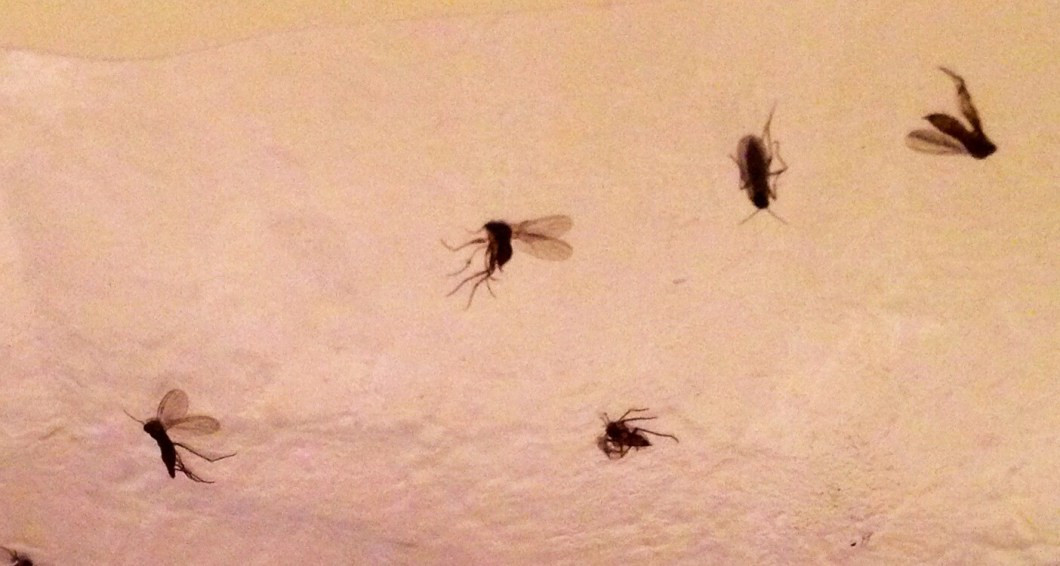Common Types of Small Flies in Kitchens and Bathrooms

Small flies are a common nuisance in kitchens and bathrooms, often appearing in swarms and contaminating food and surfaces. Understanding the types of flies you’re dealing with is crucial for effective control. This section will delve into the most prevalent types of small flies found in kitchens and bathrooms, their life cycles, breeding habits, and distinguishing characteristics.
Types of Small Flies
| Fly Type | Description | Breeding Habits | Identifying Features |
|---|---|---|---|
| Fruit Flies (Drosophila melanogaster) | Tiny flies, typically 1/8 inch long, with reddish-brown eyes and yellow-brown bodies. They have distinctive wings that are held out at a 45-degree angle when at rest. | Fruit flies are attracted to fermenting fruit, spoiled vegetables, and sugary liquids. Females lay eggs in decaying organic matter, and larvae develop in these materials. | Small size, reddish-brown eyes, yellow-brown bodies, wings held out at a 45-degree angle when at rest. |
| Drain Flies (Psychoda spp.) | Small, moth-like flies with fuzzy bodies and long, slender legs. They are typically gray or black and have a wingspan of about 1/4 inch. | Drain flies breed in moist, organic matter, such as sewage, slime, and decaying vegetation. They are often found in drains, sinks, and shower areas. | Fuzzy body, long legs, moth-like appearance, gray or black color. |
| Phorid Flies (Phoridae) | Small, hump-backed flies with short, stout legs and a distinctive “hump” on their thorax. They are typically black or dark brown and have a wingspan of about 1/8 inch. | Phorid flies breed in decaying organic matter, including garbage, sewage, and compost. They are also known to infest ant nests. | Hump-backed body, short, stout legs, black or dark brown color. |
Causes of Small Fly Infestations: Small Flies In Kitchen And Bathroom

Small flies are attracted to kitchens and bathrooms because they seek out sources of food, moisture, and breeding grounds. These tiny insects are opportunistic feeders and can quickly infest a home if conditions are favorable.
Food Sources
Small flies are drawn to decaying organic matter, which provides them with the nutrients they need to survive and reproduce.
- Overripe fruits and vegetables: These are particularly attractive to flies as they begin to ferment and release a sweet, pungent odor.
- Spoiled food: Leftovers, spills, and crumbs that are left out can quickly become a breeding ground for flies.
- Pet food: Uncleaned pet food bowls and spills can attract flies, especially if the food is left out for extended periods.
- Compost bins: These are prime breeding grounds for flies, especially if they are not properly maintained and sealed.
- Garbage disposals: Food particles that accumulate in garbage disposals can attract flies, especially if the disposal is not cleaned regularly.
Moisture Sources, Small flies in kitchen and bathroom
Small flies are also attracted to moisture, which they need for survival and reproduction.
- Leaky faucets: Dripping faucets provide a constant source of moisture that can attract flies.
- Condensation: Condensation that forms on windows, walls, and ceilings can create a damp environment that attracts flies.
- Spilled liquids: Spills on the floor, countertops, and in sinks can attract flies, especially if they are not cleaned up promptly.
- Damp towels: Towels that are left damp can attract flies, especially in bathrooms.
- Overflowing drains: Overflowing drains can create a breeding ground for flies, especially if they are not cleaned regularly.
Household Items and Practices
Certain household items and practices can unintentionally attract flies.
- Open windows and doors: Open windows and doors provide easy access for flies to enter a home.
- Dirty dishes: Dirty dishes left in the sink or on the counter can attract flies, especially if they contain food particles.
- Unsealed trash cans: Unsealed trash cans provide easy access for flies to reach food scraps and other organic matter.
- Pet waste: Pet waste, especially if it is not cleaned up promptly, can attract flies.
- Standing water: Puddles of water, even small ones, can attract flies and provide a breeding ground for them.
Common Causes of Fly Infestations
| Location | Common Causes |
|---|---|
| Kitchen | Overripe fruits and vegetables, spoiled food, pet food, compost bins, garbage disposals, dirty dishes, unsealed trash cans, standing water. |
| Bathroom | Leaky faucets, condensation, spilled liquids, damp towels, overflowing drains, pet waste. |
Small flies in kitchen and bathroom – Those pesky little flies that seem to appear in kitchens and bathrooms can be a real nuisance. One way to help prevent them is to ensure your windows are properly sealed, and that includes choosing the right window coverings.
For your bathroom, consider small bathroom window blinds that are both stylish and functional, providing a barrier against those unwanted insects while still allowing light to filter through. With a little effort, you can create a more fly-free environment in your home.
Small flies in the kitchen and bathroom can be a real nuisance, often appearing when there’s a lingering food source or moisture. While you tackle the root cause of the infestation, you might find yourself seeking a peaceful escape in a calming space, like a navy blue small bathroom.
The cool, soothing hue can help create a tranquil atmosphere, perfect for de-stressing after dealing with those pesky flies.